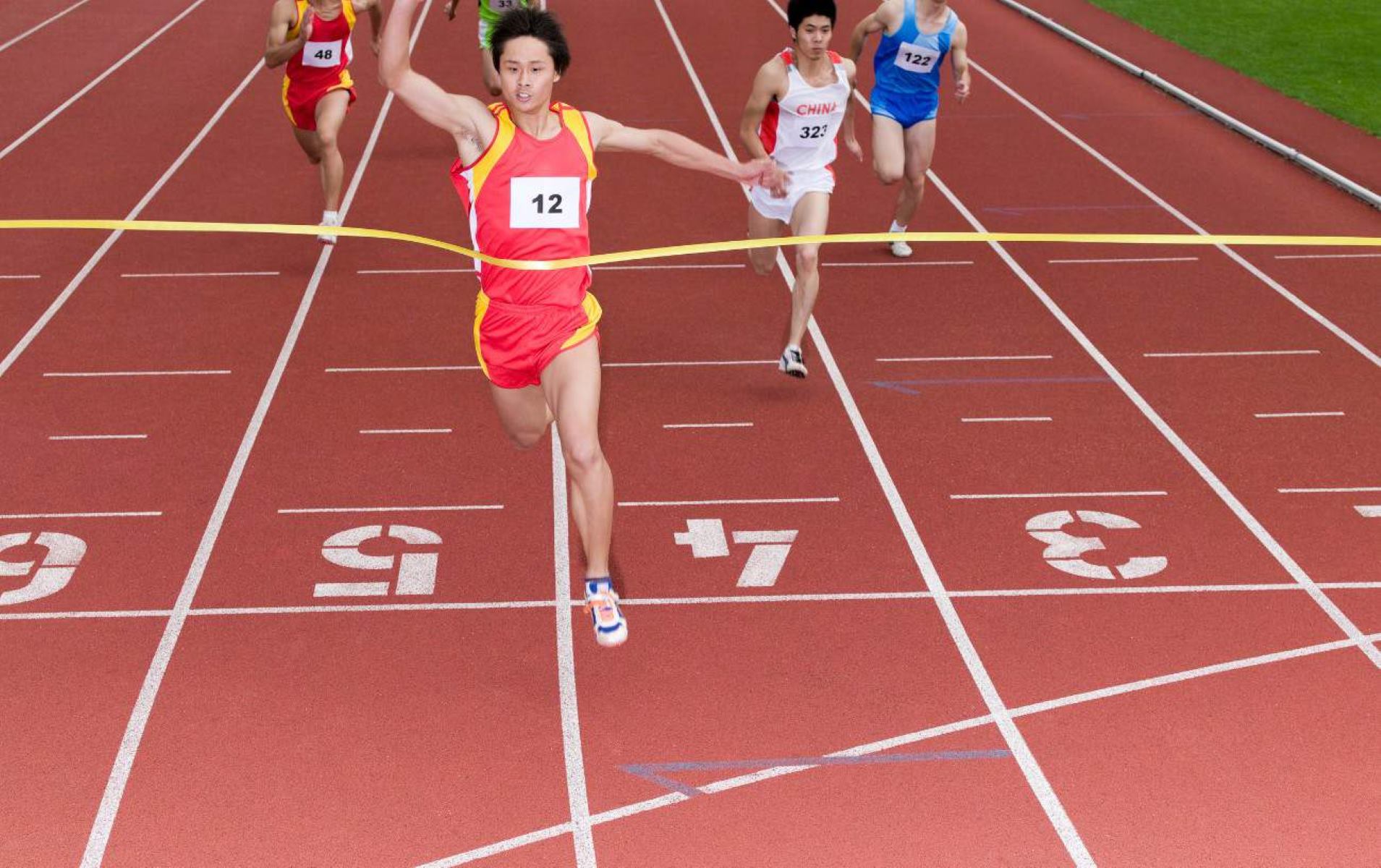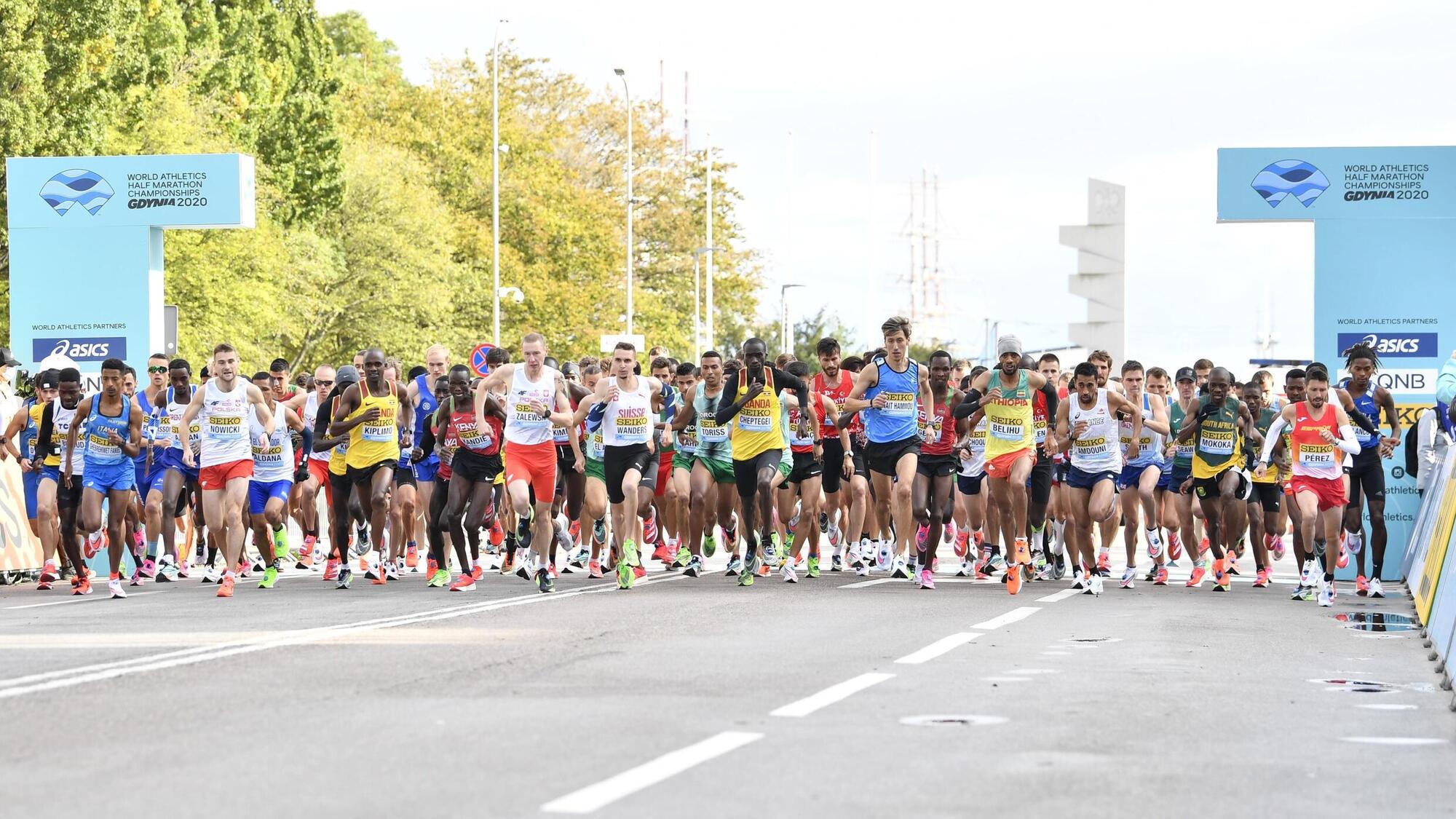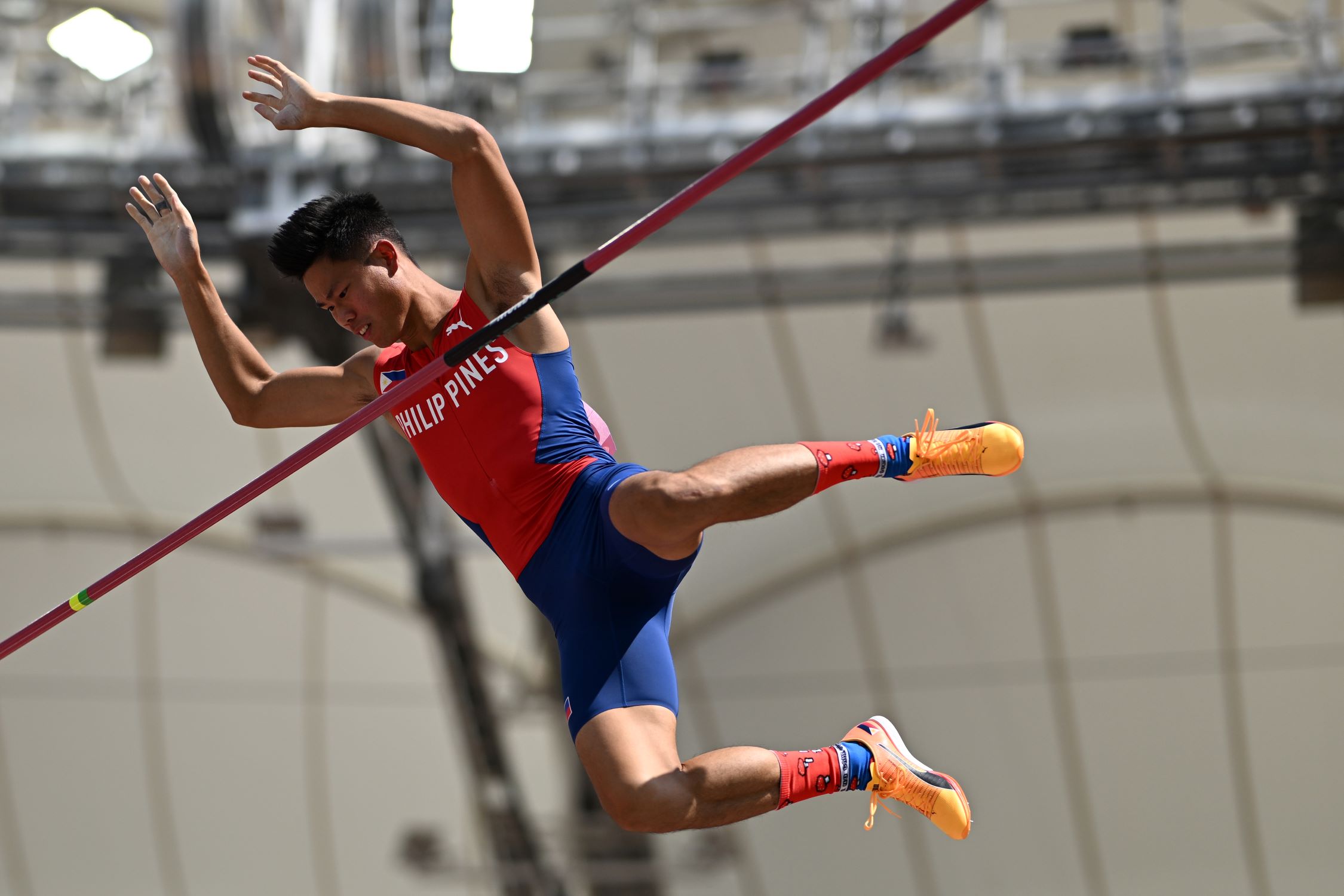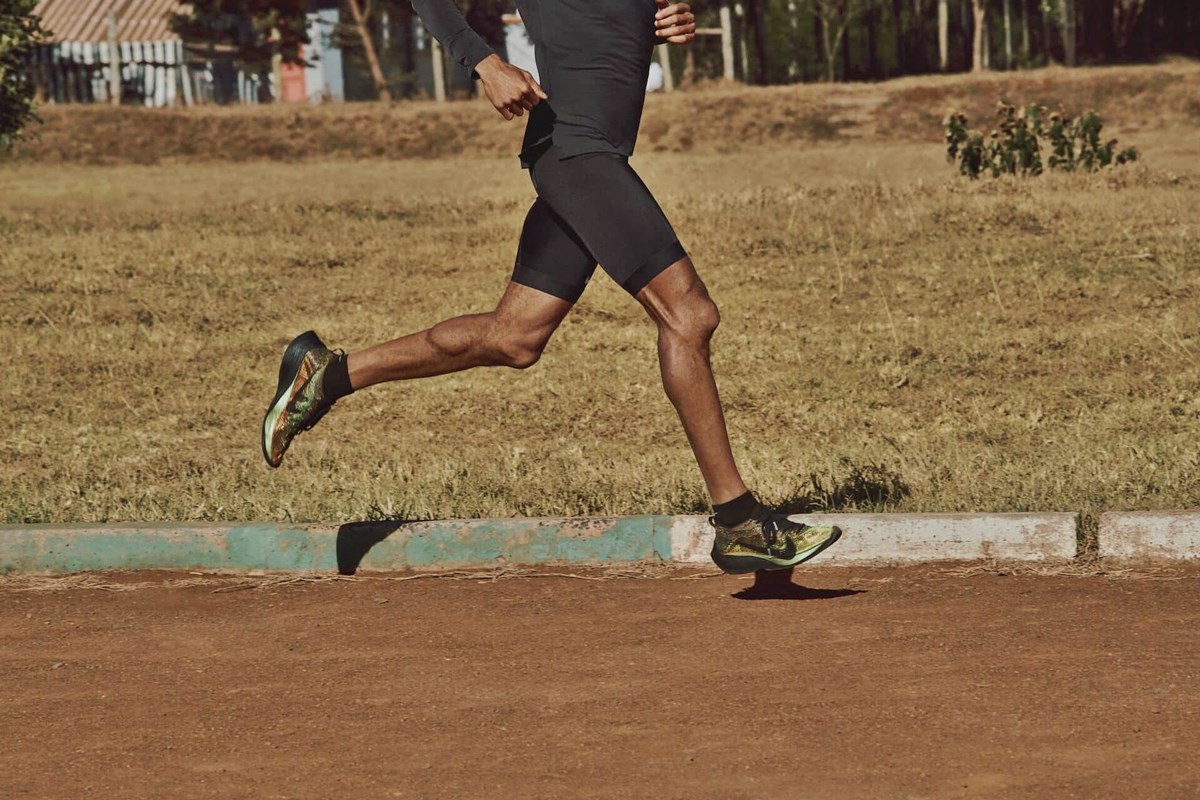

Featured
What Does PR Mean In Track And Field
Modified: January 2, 2024
Discover the meaning of PR in track and field with our featured article. Gain insights into personal records and their significance.
Introduction
Welcome to the exciting world of track and field! From sprints to relays, hurdles to long jumps, and shot puts to discus throws, track and field offers a thrilling display of athletic prowess and endurance. But if you’ve ever watched a track and field event, you may have noticed that athletes frequently mention their “PR” or personal record. What does PR mean in track and field, and why is it such a significant aspect of the sport? In this article, we will delve into the definition of PR, its importance, how it is measured, factors affecting it, benefits of improving it, and strategies to enhance it.
PR, short for personal record, refers to an athlete’s best performance in a specific event. It represents their highest achievement in terms of time, distance, or height in that particular discipline. PRs serve as a benchmark for athletes to gauge their progress and measure their improvement over time. Whether it’s shaving off a few milliseconds from a sprint time or adding a few centimeters to a long jump, breaking one’s PR is a moment of celebration and validation of the hard work and dedication put into training.
In track and field, PRs play a crucial role in evaluating an athlete’s performance and determining their ranking within their event. Coaches, recruiters, and fellow athletes often look to PRs to assess an athlete’s potential and talent. They provide a standardized metric that allows for fair comparison and serves as a common language across the track and field community. PRs also serve as a source of motivation and inspiration, pushing athletes to push their limits and strive for continuous improvement.
Next, we will explore how PRs are measured in track and field events and the factors that influence an athlete’s PR. We will also discuss the benefits of improving PRs and provide strategies for athletes to enhance their performance and achieve new personal records.
Definition of PR in Track and Field
In the world of track and field, PR stands for personal record. It refers to an athlete’s best performance in a specific event, whether it be a sprint, jump, throw, or distance race. PRs serve as a testament to an athlete’s individual achievement and highlight their progress and improvement over time.
Personal records are an essential aspect of track and field because they provide a quantitative measurement of an athlete’s performance. They represent the pinnacle of an athlete’s abilities and serve as a benchmark for future goals and aspirations. Breaking a PR is a momentous occasion for athletes, signifying that they have surpassed their previous best and reached new heights of success.
PRs are measured in various units depending on the event. For sprints, the PR is typically recorded as the fastest time in seconds or milliseconds. In field events such as jumps and throws, the PR is measured in distance or height, such as meters or centimeters. For distance races, the PR is expressed as the fastest time over a specific distance, such as minutes and seconds for shorter races or hours, minutes, and seconds for longer distances.
It is important to note that PRs are specific to individual events. Different events require different skills, techniques, and physical attributes, which means that an athlete may have multiple PRs across various disciplines. This allows athletes to specialize and focus on specific events where they excel, while also setting goals to improve their performance in other areas.
Athletes often track their PRs diligently, maintaining a record of their best performances, either in personal training logs or through official records maintained by track and field governing bodies. These records not only serve as a personal achievement but also contribute to an athlete’s overall ranking and standing within the sport.
In the next section, we will explore the significance of PRs in track and field and why they are highly regarded by athletes, coaches, and the track and field community as a whole.
Importance of PR in Track and Field
Personal records, or PRs, hold immense importance in the world of track and field. They serve as key indicators of an athlete’s progress, talent, and potential. Here are a few reasons why PRs are highly regarded in the track and field community:
- Measurement of Improvement: PRs provide a tangible measure of an athlete’s improvement over time. By comparing their current performance to their previous best, athletes can gauge how much they have grown and identify areas for further development. PRs also act as a source of motivation, encouraging athletes to strive for continuous improvement and reach new levels of excellence.
- Evaluation and Ranking: PRs play a vital role in evaluating an athlete’s performance and determining their ranking within their event. Coaches, recruiters, and fellow athletes often rely on PRs as a benchmark to assess an athlete’s potential and talent. Achieving a new PR can significantly impact an athlete’s chances of receiving scholarships, invitations to elite competitions, and recognition within the track and field community.
- Goal Setting: PRs serve as both short-term and long-term goals for athletes. Setting a PR target helps athletes focus their training and track their progress. Breaking a PR is not only a testament to an athlete’s hard work, but it also signifies that they have reached a new level of performance. This sense of accomplishment fuels the drive to set new goals and strive for even greater achievements.
- Performance Comparison: PRs offer a standardized metric for comparing performances among athletes. They provide a common language and allow for fair comparisons, regardless of variables such as weather conditions, track surfaces, or competition levels. PRs enable athletes to gauge their standing within their event and identify where they need to improve to compete at higher levels.
- Mental Confidence: Breaking a PR can have a tremendous impact on an athlete’s confidence and mindset. It demonstrates that their hard work and dedication have paid off, boosting their belief in their abilities. A strong PR can give athletes the mental fortitude to push through challenges, overcome setbacks, and approach future competitions with a winning mindset.
As you can see, PRs are not merely numbers on a scoreboard; they represent an athlete’s growth, potential, and dedication. They are a testament to the hard work, sacrifices, and determination that athletes put into their training. In the next section, we will explore how PRs are measured in track and field events and the factors that influence an athlete’s ability to set a new PR.
How PR is Measured in Track and Field
Measuring personal records (PRs) in track and field involves determining the best performance achieved by an athlete in a specific event. The method of measuring PRs varies depending on the event and requires precise timing or measuring techniques. Here is an overview of how PRs are measured in different track and field disciplines:
- Sprints: In sprint events, PRs are typically measured using electronic timing systems. High-precision timers are used to record an athlete’s finish time in seconds or milliseconds, ensuring accurate measurements. The times are captured as athletes cross the finish line, providing an objective and reliable measure of their performance.
- Distance Races: PRs in distance races, such as the 800 meters, 1500 meters, or longer events like the 10,000 meters or marathon, are also recorded using electronic timing systems. Athletes wear timing chips on their shoes or bib numbers, which communicate with sensors along the course to track their time. The finish time is then converted into minutes and seconds, reflecting the athlete’s best performance over the given distance.
- Field Events: PRs in field events, including jumps and throws, are measured in distance or height. In long jump, triple jump, and high jump events, the distance is measured from the takeoff or jump point to the landing spot. For shot put, discus throw, or javelin throw, the distance is measured from the point of release to the landing area. Officials use measuring tapes or other calibrated equipment to ensure accurate measurements, and athletes’ PRs are recorded in meters or centimeters.
It is important to note that PRs are typically accepted when achieved in competitions or under conditions adhering to track and field regulations. Each track and field event has specific guidelines that must be followed for a result to be considered a valid PR. These guidelines include factors such as wind speed limits for sprints and jumps and weight and size specifications for throwing implements.
In addition to measuring PRs in individual events, athletes sometimes track their personal bests in combined events, such as the decathlon or heptathlon. These events require athletes to compete in multiple disciplines, and their PR is determined by the cumulative score they achieve across all the events.
Now that we understand how PRs are measured in track and field, let’s explore the various factors that can affect an athlete’s ability to set a new personal record in their event.
Factors Affecting PR in Track and Field
Personal records (PRs) in track and field are influenced by a variety of factors that can impact an athlete’s performance in their event. Understanding these factors can help athletes identify areas for improvement and optimize their training. Here are some key factors that can affect an athlete’s ability to set a new PR:
- Physical Fitness: An athlete’s physical fitness level plays a significant role in their ability to set a new PR. Factors such as strength, power, speed, endurance, and flexibility contribute to an athlete’s overall performance. Improving these attributes through specific training regimens can lead to enhanced performance and the opportunity to achieve new personal records.
- Technical Skill: Mastery of proper technique is vital in track and field events. The way an athlete executes a sprint, jump, or throw can greatly impact their performance. Working on refining and perfecting technical skills, such as stride length and frequency in sprints or release angles and timing in throws, can lead to improvements in performance and the potential to set new PRs.
- Mental Preparation: Mental factors, including focus, confidence, and mental toughness, can greatly influence an athlete’s ability to achieve their best performance. Maintaining a positive mindset, visualizing success, and effectively managing pre-competition nerves can contribute to improved results. Developing mental strategies and engaging in sports psychology techniques can help athletes optimize their mental preparation and enhance their chances of setting new PRs.
- Environmental Conditions: Environmental factors can have a significant impact on an athlete’s performance. Variables such as temperature, humidity, wind speed, and altitude can affect an athlete’s ability to run, jump, or throw at their best. Adverse conditions can hinder performance, while favorable conditions can provide athletes with a performance advantage. Athletes must learn to adapt to different environmental conditions and make necessary adjustments to achieve their PRs.
- Competition Level: The level of competition can influence an athlete’s performance and their ability to set a new PR. Competing against stronger opponents can push an athlete to perform at a higher level, leading to the potential for improved results. Similarly, participating in elite competitions or championship events often brings out the best in athletes, as the competitive atmosphere fosters exceptional performances and new personal records.
- Training Consistency and Volume: Consistent training and appropriate training volume are essential for continual improvement and the potential to set new PRs. Regularly participating in training sessions, following a well-structured program, and gradually increasing the intensity and volume of training can lead to improved physical fitness and performance levels. Adequate rest and recovery periods are also crucial for allowing the body to adapt and make progress.
Understanding the factors that affect PRs in track and field allows athletes to assess their strengths and weaknesses, target specific areas for improvement, and develop strategies for success. In the next section, we will explore the benefits of improving personal records and how athletes can utilize strategies to enhance their performance and achieve new PRs.
Benefits of Improving PR in Track and Field
Track and field athletes strive to improve their personal records (PRs) for several compelling reasons. Enhancing their PRs can bring numerous benefits and open doors to new opportunities. Here are some key advantages of improving personal records in track and field:
- Recognition and Prestige: Setting a new PR in track and field is a significant accomplishment that brings recognition and prestige. Athletes who consistently improve their PRs gain respect from their peers, coaches, and the track and field community. They become known as athletes who are dedicated to their craft, determined to excel, and willing to push their limits.
- Competitive Advantage: Improving PRs provides a competitive edge in track and field. As athletes surpass their previous best performances, they become more competitive within their event. A better PR can lead to higher rankings, more opportunities to compete at elite levels, and increased chances of being selected for national or international teams, scholarships, or professional contracts.
- College and Scholarship Opportunities: Athletes with impressive PRs often attract the attention of college recruiters. Universities and colleges actively seek out athletes who have shown consistent improvement and have the potential to contribute to their track and field teams. A strong PR can be a determining factor in securing scholarships and admission to top-tier academic institutions.
- Self-Confidence and Personal Growth: Improving personal records builds an athlete’s self-confidence and emotional well-being. Setting new PRs reinforces the belief that hard work, dedication, and perseverance pay off. This confidence extends beyond the track and field arena and can positively impact other areas of life, fostering personal growth, resilience, and a mindset focused on continuous improvement.
- Career Advancement: For athletes aspiring to pursue track and field professionally, improving PRs is crucial for career advancement. Strong PRs demonstrate an athlete’s potential and consistent progress, attracting the attention of talent scouts, sponsors, and professional teams. Greater PRs can lead to renewed contracts, endorsements, increased exposure, and the potential for financial rewards.
- Motivation for Training: The pursuit of PRs serves as a powerful motivating force for athletes. Having a clear benchmark to surpass inspires them to train harder, be disciplined, and continuously strive for improvement. Chasing new PRs keeps athletes engaged, focused, and committed to their training, ultimately leading to enhanced overall performance in track and field events.
Improving personal records in track and field brings a sense of accomplishment, creates new opportunities, and fuels an athlete’s competitive drive. Athletes who consistently exceed their PRs are driven by a desire for excellence and a passion to maximize their potential. In the next section, we will explore strategies that athletes can employ to improve their PRs and enhance their performance in track and field.
Strategies for Improving PR in Track and Field
Improving personal records (PRs) in track and field requires a combination of dedication, strategic planning, and focused training. Here are some effective strategies that athletes can employ to enhance their performance and achieve new PRs:
- Proper Training Program: Follow a well-designed training program tailored to your specific event. Work with a knowledgeable coach who can develop a training plan that targets your strengths and areas for improvement. A comprehensive program should include a mix of speed, endurance, strength, and technique training sessions.
- Set Realistic Goals: Set realistic and achievable goals for improving your PRs. Break them down into smaller, measurable milestones that you can work towards. Celebrate each improvement along the way, as progress builds motivation and confidence.
- Focus on Technique: Pay attention to proper technique in your event. Work closely with your coach to refine your form, stride, timing, and execution. Improving your technique can lead to more efficient movements, better energy transfer, and ultimately improved performance.
- Strength and Conditioning: Incorporate strength and conditioning exercises into your training routine to build power, endurance, and injury resilience. Focus on exercises that target muscles specific to your event, such as plyometrics for jumpers or weightlifting for throwers, to enhance performance and prevent injuries.
- Mental Preparation: Develop mental strategies to optimize your performance. Practice visualization, positive self-talk, and relaxation techniques. Focus on staying calm, confident, and focused during training and competition to unleash your full potential.
- Competition Selection: Choose your competitions strategically. Participate in a mix of local, regional, and national-level events, gradually increasing the level of competition. Competing against stronger opponents can push you to perform at a higher level, leading to the potential for PR improvements.
- Video Analysis: Utilize video analysis to assess your technique and identify areas for improvement. Record your performances during training and study them with your coach. This allows you to pinpoint weaknesses, make necessary adjustments, and monitor progress as you work towards your PRs.
- Rest and Recovery: Give yourself adequate time for rest and recovery. Include rest days in your training schedule to allow your body to repair and adapt to the stress of training. Proper rest and recovery are crucial for avoiding overtraining and optimizing performance.
- Nutrition and Hydration: Maintain a balanced diet and stay properly hydrated to support your training and performance. Consult with a sports nutritionist to ensure you’re fueling your body with the right nutrients and hydrating adequately before, during, and after training sessions and competitions.
Remember, improving PRs in track and field is a long-term process that requires consistency, patience, and resilience. Embrace the journey and focus on continuous improvement. Each training session and competition provides an opportunity to learn, grow, and move closer to achieving your personal best. Implementing these strategies can help you optimize your performance and increase your chances of setting new PRs.
Conclusion
Personal records (PRs) play a significant role in the world of track and field. They represent an athlete’s best performance in a specific event and serve as a benchmark for progress and improvement. PRs are measured and recorded in various ways, depending on the event, and are influenced by several factors such as physical fitness, technique, mental preparation, environmental conditions, competition level, and training consistency.
Improving PRs in track and field brings numerous benefits, including recognition, competitive advantage, college and scholarship opportunities, self-confidence, career advancement, and increased motivation for training. To enhance their performance and achieve new PRs, athletes should follow a proper training program, set realistic goals, focus on technique, incorporate strength and conditioning exercises, engage in mental preparation, strategically select competitions, utilize video analysis, prioritize rest and recovery, and maintain proper nutrition and hydration.
Tracking and striving to break one’s PRs is a journey of continuous improvement. It requires dedication, perseverance, and a growth mindset. By embracing the challenge and implementing effective strategies, athletes can elevate their performance, reach new heights, and inspire others with their achievements in the world of track and field.








